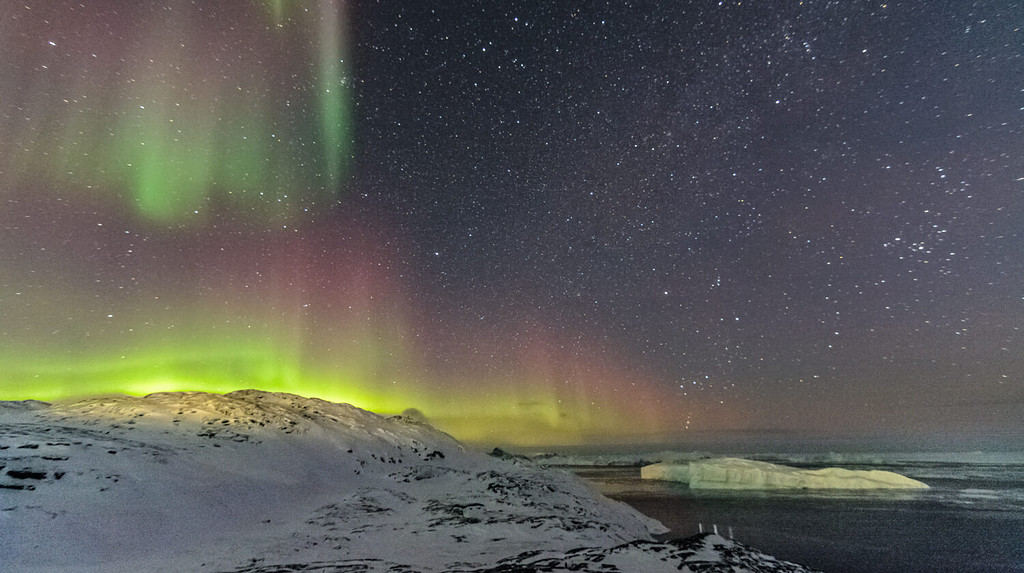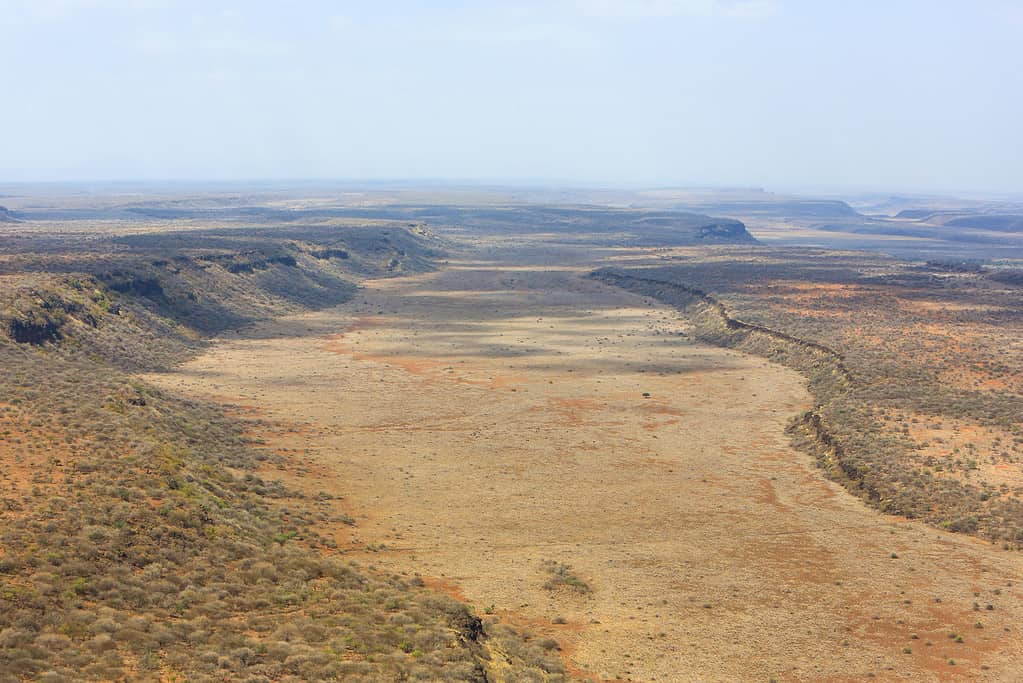Sometimes, people see what are called earthquake lights when a major seismic event happens where they’re located. Scientists haven’t put their finger on exactly what they are, and it’s hard to measure them because when and where they’ll happen can’t be pinpointed. What are earthquake lights? What we know about this mysterious phenomenon is touched on below.
Earthquake Lights: What Are They?
Earthquake lights are mysterious bright lights that appear in the sky hours before or during earthquakes around the world. This phenomenon has been observed since ancient history, though no one knows why it occurs. These lights are not dismissable as any other known phenomenon like malfunctioning electricity infrastructure, explosions, sprites, lightning, or the Aurora Borealis.
What Do Earthquake Lights Look Like?

Some eyewitnesses say earthquake lights resemble the Aurora Borealis in this picture.
©Elke Kohler/Shutterstock.com
Earthquake lights sometimes look like a blue or white Aurora Borealis, though other colors have been seen. Most of the time, they’re reported as being blue, though purple, pink, and green are also seen. There have been many reports of a flash of green light on the horizon immediately preceding shaking.
Sometimes people in an earthquake zone see spheres floating above the ground, or they spot what looks like colorful flames made of light coming out of the ground. Other times, clouds look like they’re backlit by some kind of light source. It’s been reported that lightning emanating from the ground instead of the sky has occurred, with the bolts traveling up to 650 feet.
Some witnesses say they last a few seconds, while others have reported they were visible for a few minutes. Some people have spotted earthquake lights near the epicenter of a quake, and some have seen them as far away as 450 miles or more.
What Causes Earthquake Lights?

A process that occurs when quartz is compressed may be responsible for earthquake lights.
No one is sure what causes earthquake lights though they only seem to occur during larger quakes. Almost all reported instances have been a result of an earthquake with a magnitude 5 or higher.
They might be caused by the breaking of special molecular bonds in rocks under extreme stress. These breaking molecules can affect the air outside of the rock and cause an emission of light. This may come from deep vertical streaks of rock, called dikes, made of basalt or gabbro.
Piezoelectricity may also be the culprit. This is a process in which vibrations or stress create voltage. Since voltage pushes extant electricity around, this phenomenon may be what creates the visible lights people see during quakes. In this context, it’s believed compressed quartz may be the cause.
Other theories suggest they may be caused by the planet’s magnetic field or by disruptions in the ionosphere above the epicenter. This might explain why the lights sometimes look like the Aurora.
A poorly understood phenomenon called triboluminescence may also be the culprit. This method of light generation is not well understood though it is reliably observed by scientists in laboratory settings. Static electricity is sometimes produced by certain substances when rubbed, scratched, ripped, or crushed. A huge discharge of this kind of static electricity may be responsible for the lights people spot.
Finally, some scientists think the entire phenomenon is make-believe. Many professionals equate the appearance of earthquake lights with the same level of respect that scientists should give to UFOs, cryptozoology, and other pseudosciences. They do this despite photographic evidence and thousands of accounts describing the same light phenomena during many specific earthquakes.
Where Do Earthquake Lights Happen?

Quakes in areas of continental rifting host 85 percent of all earthquake light sightings.
©JordiStock/Shutterstock.com
Where earthquake lights happen is currently impossible to predict. That’s because they only happen with less than half of a percent of all quakes on Earth.
The appearance of these lights may be more common away from the boundaries between tectonic plates. Instead, they result from earthquakes inside these plates. Where the surface of the Earth cracks and forms a rift valley due to tectonic plate separation is also considered a spot prone to earthquake lights.
They are prevalent in areas of continental rifting, with 85 percent of all modern sightings taking place in these locations. In contrast, only 5 percent of the world’s quakes take place in these spots. The remaining 15 percent of appearances happen along transform faults where two tectonic plates are sliding against each other.
Understanding Earthquake Lights May Help Predictions
If scientists can unlock the origins of earthquake lights, it may help them better predict when and where an earthquake will occur. Right now, ideas revolve around detecting a change in atmospheric electric charge or the planet’s electromagnetism as it relates to these lights. This may improve early detection science.
The problem is that most quakes don’t have associated lights. As a consequence, until the regions that can produce these lights are identified, forecasting when a quake will happen remains nebulous.
The photo featured at the top of this post is © Inked Pixels/Shutterstock.com
Thank you for reading! Have some feedback for us? Contact the AZ Animals editorial team.







